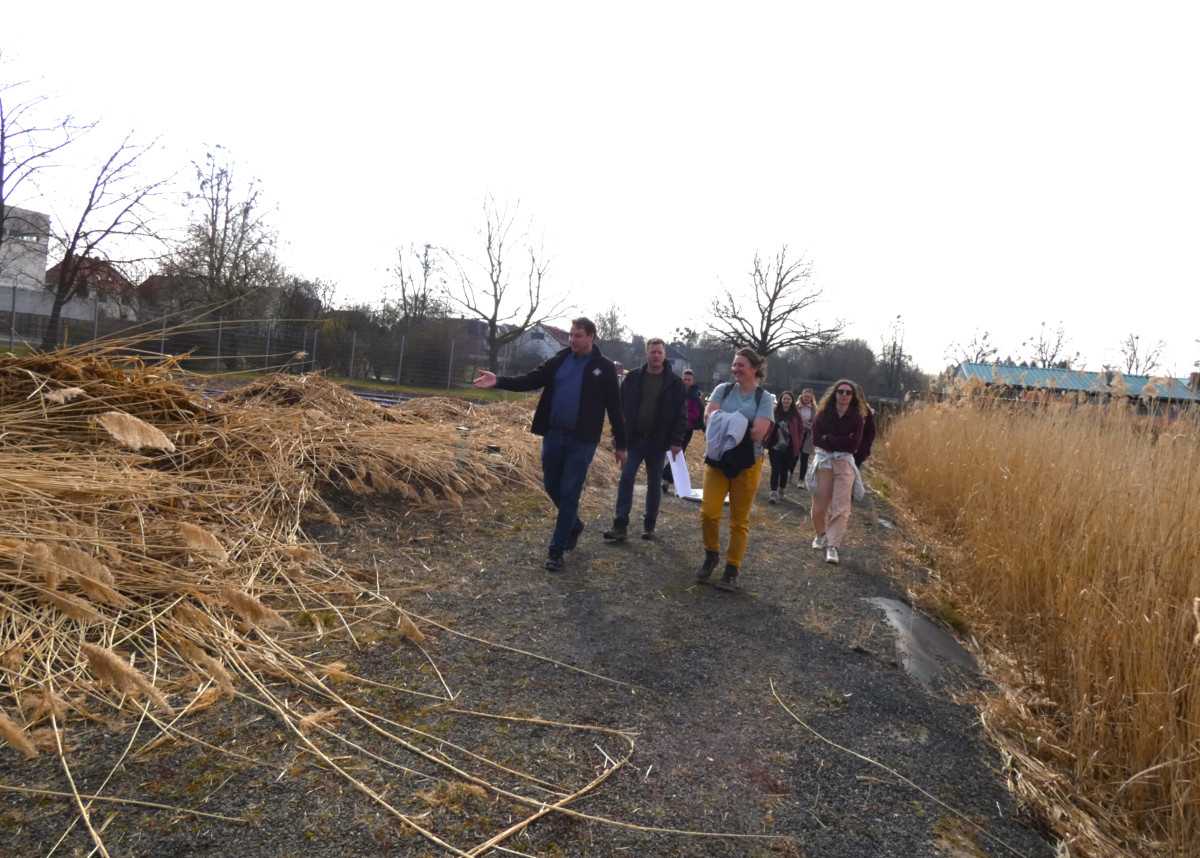In Transition: The 2nd ELCA Project Study Tour and the Importance of Green Infrastructure in Climate Protection
Published: Apr 22, 2025 Reading time: 5 minutes Share: Share an articleWhat does a city look like that not only responds to climate change, but actively counters it with concrete solutions? How can municipalities - large or small - design their infrastructure to not only be functional, but also climate-resilient, liveable, and adaptable?

With these exact questions in mind, the second Empowering Local Climate Action (ELCA) study tour took place from 24 March to 27 March, 2025 in Germany. Experts and project participants from the Czech Republic and Romania -- who had already been collaborating through the EUKI (European Climate Initiative) project since March 2023 -- were also in attendance.
Following an intensive online training phase in the spring of 2024 and the beginning of practical implementation in the fall of the same year, it was time to continue turning theory into practice.
As a part of this, GNE (= ASD Association for Sustainable Development) organised two study tours in Germany to promote knowledge transfer through practical examples and previous successful implementations. After the first tour, which took place in October 2024 and focused on realisation of the project in rural localities, the second study tour took place relatively recently, from 24 March to 27 March, 2025, and focused on executing projects in urban and semi-urban areas.
The theme of this second study trip was “The Role of Green Technologies in Climate Protection.” “Through innovative and nature-based technologies, the trip highlighted how best practice examples can directly contribute to CO₂ reduction and climate adaptation and how these sorts of solutions can be integrated into urban planning and climate protection management in a cost effective, efficient, and sustainable manner”, says project lead, Project lead Viola Helwig.
The Natural Outdoor Pool in Grone, Göttingen
During the second ELCA study tour, we stopped at the Natural Outdoor Pool Grone in Göttingen. The pool uses an innovative, bio hydraulic, solar-powered filtration system that purifies water without chemical additives like chlorine. Since its opening in 2006, this nature-based technology has ensured excellent water quality by employing natural processes such as filtration through reed plants. This method reduces energy consumption while protecting the environment.
With over 1,000 visitors on hot summer days, the pool is not only an environmentally-friendly alternative to conventional swimming pools, but the surrounding area also offers numerous recreational activities. The area includes a sports pool, a non-swimmer pool with a gravel bottom, a water slide, beach volleyball courts, and a nature trail. It impressively demonstrates how integrating nature-based technologies can create a sustainable, high-quality swimming experience for visitors.
Constructed Wetlands: A Sustainable Solution for Wastewater Treatment
Later in the morning, the study tour focused on the planning and implementation of constructed wetlands. These nature-based wastewater treatment systems use plants like reeds, cattails, and bulrushes to biologically clean wastewater. Michael Blumberg, engineer and managing director of Ingenieurbüro Blumberg, provided valuable insights into the technical, ecological, and legal aspects of planning such systems.
Key planning considerations include:
- Type and quantity of wastewater: What kind of wastewater is to be treated and how much?
- Legal requirements: What permits are needed and what discharge limits must be observed?
- System sizing: What size is required to effectively treat the wastewater volume?
- Operation and maintenance: How is the system operated and monitored, and what maintenance is needed?
- Ecological benefits: What biodiversity and educational opportunities are available?
Green Roofs as Climate Protection Technology
Another important aspect of the first day was the examination of green roofs as a sustainable climate protection technology. Green roofs offer numerous benefits beyond just the aesthetic enhancement of buildings. They help cool cities by reducing temperatures through evaporation, especially during heatwaves. Additionally, they improve air quality by filtering fine dust and pollutants.
The engineering office Blumberg also specialises in the development of wetland plant roofs, which offer additional water storage functions. These roofs help retain rainwater and relieve sewer systems during heavy rainfall. They also support biodiversity by creating habitats for various plant and animal species.
Why These Topics Matter for Climate Protection Management
Constructed wetlands, green roofs, and green facades are not just technological solutions they are essential components of sustainable, climate-friendly infrastructure. Their many benefits include:
- Energy savings: Constructed wetlands use significantly less energy than conventional treatment plants and thus help reduce CO₂ emissions.
- Reduction of urban heat islands: Green roofs and facades cool cities and lessen the impact of heatwaves.
- Biodiversity promotion: These green infrastructure solutions create valuable habitats for flora and fauna.
- Resource conservation: The use of nature-based water treatment and rainwater retention supports the circular economy.
Conclusion: The Role of Green Infrastructure in Climate Protection
Green infrastructure is more than just a technical solution, it is key to creating sustainable, climate-resilient cities and communities. It links technology, ecology, and urban development while making tangible contributions to emission reduction, heat mitigation, and circular resource use. For future professionals in climate protection management, understanding and actively shaping these solutions is essential. Green infrastructure is a core topic in climate protection and should play a central role in the education of future specialists.
The project Empowering Local Climate Action contributes its expertise to help integrate these sustainable technologies into municipal practice making a significant contribution to climate adaptation and emissions reduction.



